COVID-19 is the most serious pandemic and the biggest public health emergency the world has experienced in a century. The origins-tracing of SARS-CoV-2 aims to identify the zoonotic source of the virus and the route of introduction to the human population, including the possible role of intermediate hosts. The work is of vital importance to taking targeted interventions against infectious diseases and reducing the risk of similar events occurring. To produce a research report that can stand the test of history, a paramount principle that must be upheld is sticking to the spirit of science, adopting a science-based approach, and following the law of science.
The origins-tracing study is a complex and serious matter of science. To study the origins, transmission and evolution of COVID-19, which has raged across over 200 countries and regions, the global science community needs to work together so that science, solidarity and cooperation will prevail over ignorance, isolation and prejudice.
China has its share of COVID-19 prevention and control work. Yet, it has twice invited international experts to conduct origins-tracing studies. In a science-based, open, transparent and cooperative manner, China offered the necessary facilitation for WHO expert team’s work in Wuhan. With a sense of responsibility and urgency, the WHO-China joint team completed the China part of the global study of origins, giving a panoramic view of the work methods and major findings of origins-tracing study and offering suggestions for the next phase of global origins-tracing work.
Based on media reports and information from China’s National Health Commission, research institutes, universities and other relevant parties, Xinhua reporters have reviewed major facts of China’s facilitation for the WHO-China joint team’s origins-tracing study in Wuhan. The following are the major facts in chronological order.
2020
From July to August, WHO and China conducted the groundwork for studies to better understand the origins of the virus. Terms of Reference (TORs) were agreed that defined a phased approach, and the scope of studies, the main guiding principles and expected deliverables. The TORs envisaged an initial Phase 1 of short-term studies to better understand how the virus might have been introduced and started to circulate in Wuhan, China.
On July 11, an advance team, comprised of two experts,Mr. Olivier le Polain and Dr. Peter K. Ben Embarek, arrived in China to conduct preparatory consultation on origins-tracing scientific cooperation.
Between July 11 and Aug. 2, experts from China and WHO held 16 meetings to exchange their views. Chinese experts introduced epidemiological investigation results of early cases in Wuhan, testing results of animal and environmental samples, data analysis of the testing results from wild animal surveillance samples, the oversight over food safety, the main hypotheses of virus transmission paths, the source of infection and potential unknown factors of the early clustered cases, among others. At the request of the WHO experts, China also arranged a special video conference between the WHO experts and Dr. Shi Zhengli’s team from the Wuhan Institute of Virology, Chinese Academy of Sciences. The Chinese and WHO experts agreed on a workplan for the China part of the WHO-convened global study of origins of SARS-CoV-2.
On Aug. 2, the WHO team left China after the visit.
From October to December, the Chinese experts and the WHO international team held four online meetings to discuss the progress of the global study of origins of SARS-CoV-2 and the work methods of the joint study on origins-tracing.
2021
From January to February, the WHO-China joint team (members are listed below) conducted study in China in accordance with the previously-agreed TORs for the China part of the WHO-convened global study of origins of SARS-CoV-2.
(Information on joint team members)
International experts, observers and WHO team members
Team leader
Peter Ben Embarek -- Scientist, Monitoring Nutritional Status & Food Safety Events, Nutrition and Food Safety, World Health Organization
Epidemiology
Thea K Fischer* -- Director of Clinical Research, Nordsjællands University Hospital, Denmark
Dominic Dwyer -- Director, NSWHP-Public Health Pathology State-wide Service and Director, New South Wales Health Pathology-Institute of Clinical Pathology and Medical Research, Westmead Hospital, Australia
Farag Elmoubasher -- Acting Head, Communicable Disease Control Programmes, Public Health Department, Ministry of Public Health, Qatar (Participating via video links)
John Watson -- Adviser, Public Health England, The United Kingdom
Marion Koopmans -- Head, Department of Viroscience, Erasmus University Medical Centre, The Netherlands
Molecular epidemiology
Marion Koopmans* -- Head, Department of Viroscience, Erasmus University Medical Centre, The Netherlands
Fabian Leendertz -- Robert Koch-Institute, Germany (Participating via video links)
David Hayman -- Co-Director, Molecular Epidemiology and Public Health Laboratory, Massey University, New Zealand (OIE Collaborating Centre) (Participating via video links)
Animal and environment
Peter Daszak* -- President and Chief Scientist, EcoHealth Alliance, United States of America
Vladimir Dedkov -- Deputy Director-General for Research, Head of Epidemiology Department, Institute Pasteur, Russian Federation
Ken Maeda -- Director, Department of Veterinary Science, National Institute of Infectious Diseases, Japan
Hung Nguyen-Viet -- Co-Leader, Animal and Human Health Programme, International Livestock Research Institute (ILRI), Kenya
Keith Hamilton -- Scientific and Technical Department, World Organisation for Animal Health (Office International des Epizooties, OIE)
Observer
Sophie von Dobschuetz – Animal Production and Health Division, Food and Agriculture Organization
Junxia Song -- Animal Health Services, Food and Agriculture Organization
WHO Team
Pat Drury -- Deputy Incident Manager for COVID-19/Unit Head, Global Outbreak Alert and Response Network (GOARN) and Global Health Emergency Workforce, Emergency Response, World Health Organization
Li Jian -- Technical Officer, Emergency Operations Centre, Strategic Health Operations, Emergency Response, World Health Organization
Lisa Scheuermann -- Technical Officer, Human Animal Interface for IHR, Health Security Preparedness, Emergency Preparedness, World Health Organization
David FitzSimons -- Consultant (Rapporteur)
Chinese team members
Team leader
Liang Wannian -- Executive Vice-President, Vanke School of Public Health, Tsinghua University
Epidemiology
Feng Zijian* -- Deputy Director-General of China CDC
Shi Guoqing -- Deputy Director of Public Health Emergency Center of China CDC
Zhou Lei -- Professor, Public Health Emergency Center of China CDC
Zhang Xianfeng -- Director-General of Hubei Provincial CDC
Tong Yeqing -- Deputy Director of Institute of Infectious Diseases of Hubei Provincial CDC
Chen Banghua -- Deputy Director of Office of Health Emergency of Wuhan CDC
Molecular epidemiology
Yang Yungui* -- Deputy Director, China National Center for Bioinformation
Song Shuhui -- Associate Professor, China National Center for Bioinformation
Wang Qihui -- Professor, Institute of Microbiology, Chinese Academy of Sciences
Huo Xixiang -- Deputy Director of Institute of Health Inspection and Testing of Hubei Provincial CDC
Peng Mingwei -- Technologist-in-charge, Institute of Pathogenic Biology of Wuhan CDC
Animal and environment
Tong Yigang* -- Director of Life Science and Technology College, Beijing University of Chemical Technology
William Jun Liu -- Professor, National Institute for Viral Disease Control and Prevention, China CDC
He Hongxuan -- Professor, Institute of Zoology, Chinese Academy of Sciences
Yang Guoxiang -- Senior Engineer, Hubei Wildlife Epidemic Source and Disease Surveillance Center
Gao Yanhong -- Deputy Director of Wuhan Zoo
(*Subgroup lead)
On Jan. 14, 2021, 13 members of the WHO-convened SARS-CoV-2 Origins-tracing Study team arrived in Wuhan by plane via Singapore and began their 14-day medical observation. They were Dr. Peter Ben Embarek, Prof. Thea K Fischer, Dr. Dominic Dwyer, Prof. Marion Koopmans, Dr. Peter Daszak, Dr. Vladimir Dedkov, Dr. Ken Maeda, Dr. Hung Nguyen-Viet, Dr. Keith Hamilton, Dr. Pat Drury, Ms. Li Jian, Ms. Lisa Scheuermann and Mr. David FitzSimons. Dr. John Watson arrived in Wuhan on Jan. 31 after entering China via Xiamen and receiving medical observation there. Dr. Farag Elmoubasher, Dr. Fabian Leendertz and Dr. David Hayman did not come to China and joined the study via video link.
From Jan. 15 to 27, WHO experts, then still in medical observation in designated places, conducted exchanges on academic topics via video link with Chinese experts:
• An overview of the development of the integrated database developed by the China National Center for Bioinformation
• The transmission of SARS-CoV-2 among mink in the Netherlands and steps taken to control outbreaks
• Pathogen identification of COVID-19
• Collection and testing of animal and environmental samples in the Huanan Seafood Wholesale Market (hereinafter referred to as the Huanan market)
• Types and sources of animal products in the Huanan market
• COVID-19 pandemic traceability and the transmission of SARS-CoV-2 via cold chain
• Progress in tracing and monitoring of SARS-CoV-2 in livestock
• The investigation into the outbreak of SARS-CoV-2 in Xinfadi market, Beijing in May-June 2020
• An overview of geographical hotspots for potential emergence of zoonotic viral diseases (in particular coronavirus-related diseases)
• Laboratory detection methods for SARS-CoV-2 in animal samples
• The performance of the SARS-CoV-2 in laboratory
• Surveillance of SARS-CoV-2 in wild animals
• The infection risk in cats, dogs and pigs to SARS-CoV-2
• The research work of the Wuhan Institute of Virology.
The joint team agreed on work plans, the outline of the joint report, and a plan of site visits.
On Jan. 28, international experts concluded their medical observation in designated places and began site visits. The following each day saw the joint team, after making site visits, hold group meetings or a plenary meeting to discuss existing scientific evidence and data analysis methods, and jointly interpret data including epidemiological data on early cases, genomic data, and animal and environmental testing data. They also worked in groups to analyze data and to draft the joint report. Meetings often went on late into the night, with some group discussions even lasting until the wee hours the next day.
On Jan. 29, the joint team visited Xinhua Hospital (Hubei Hospital of Integrated Traditional Chinese and Western Medicine) to learn about the diagnosis of the first patient of pneumonia of unknown etiology (PUE) by Dr. Zhang Jixian, the case’s follow-up treatment at the hospital, and the treatment of COVID-19 patients by the hospital during the outbreak. The case with the earliest onset date reported to the National Notifiable Infectious Disease Reporting System (NNIDRS) -- who became ill on Dec. 8, 2019 -- was invited to have face-to-face interview with the international joint team.
Interview with the patient who had recovered from COVID-19:
Through questions about the patient’s personal information and family, the WHO expert team learned that the interviewee works in a family business as an accountant. The interview found no evidence of high-risk exposure (including exposure to wild animals, mass gatherings, contacts with medical institutions, contacts with symptomatic individuals, and travel). The interviewee mentioned a relative who works in the healthcare system and another relative who had visited a local market, but no infections were reported at these places. The interviewee commutes by public transportation with no history of travel outside Wuhan.
On Jan. 30, the joint team visited the Jinyintan Hospital for Infectious Diseases in Wuhan. The joint team also paid a visit to a COVID-19 exhibition at its request. The team talked with former president of the hospital Zhang Dingyu and others, and learned about the hospital’s admission and treatment of the first batch of patients with PUE, treatment of severe COVID-19 cases with the assistance of medical workers sent from across the country, and day-to-day scientific research management, particularly COVID-19 research carried out at the hospital.
On Jan. 31, the joint team visited the Baishazhou Wholesale Market and the then-closed Huanan market. After talking with merchants, managers, and regulators of the two markets, as well as residents in the neighborhoods, experts of the team gained more information about the two markets, especially the Huanan market, including their layout, products for sale, and management, hygiene management in particular.
Focusing on the Huanan market
Although the Huanan market was closed on Jan. 1, 2020 and subsequently disinfected, it remains shuttered and closed to the public. In the market’s area most linked to COVID-19, its west section, the team visited various stalls, the ventilation system which had been shut off, and warehouses that had been closed since the prohibition of live poultry markets in China.
Meeting with people related to the Huanan market
The joint team had a face-to-face meeting with the Huanan market staff and customers, and talked with two vendors of the market who sold frozen beef and frozen seafood, two suppliers of frozen products, market regulators and the market manager, as well as two residents in the neighborhood.
The manager informed the joint team that the market was cleaned twice a day, morning and evening. Pests and rats were sought out and killed before holes were closed. Rigorous cleaning was done once or twice a week. Even though there were rooms above some stalls, vendors were not allowed to live in the market. The rooms were only for storage.
The international team was informed that the market was not a purely wholesale market and that many ordinary people also bought their food there.
The WHO team was told by a representative from Hubei CDC that around 10,000 people visited the market per day.
Two neighborhood residents had responded to a community invitation to participate in this meeting. They had been shopping regularly in the market for 20 and 30 years. They provided very similar details: Nothing was unusual or worth noticing and all vendors had business certificates and inspection certificates displayed at their stalls; they had never witnessed any live animals being sold; the market was kept clean and tidy; they had not noticed any stray cats or dogs; there had been no confirmed COVID-19 cases in their residential blocks.
On Feb. 1, the joint team visited Hubei CDC and Wuhan CDC and their laboratories, where officials from China CDC and Jianghan District CDC of Wuhan were also present. The team was provided with information on the operation of the CDC system in China, the management of laboratories, and the work of CDCs at different levels during the epidemic, particularly in the early stage of epidemic, including epidemiological investigation, sample collection and testing, virus culture, genome sequencing and sharing the results with the world, as well as retrospective testing of samples collected by the infectious disease surveillance system.
Guan Xuhua, head of the Institute of Infectious Diseases, Hubei CDC, briefed the team on the analysis of early cases and the testing of environmental samples collected at the Huanan market. Based on the information, Guan concluded that it is likely the virus was transmitted into the Huanan market via individuals or animals. It is more likely from individuals in view of the sporadic cases prior to Dec. 10, 2019 having no exposure to the Huanan market.
The experts were provided with information on the infection among staff members of CDCs at different levels. All laboratory staff of Hubei CDC had been tested for SARS-CoV-2-specific antibodies: all had negative IgM and IgG results. One staff member of Wuhan CDC was confirmed SARS-CoV-2 seropositive after infection due to family cluster transmission. All other staff members had tested negative. A health check was mandatory for all BSL-2 laboratory workers, but no serum was preserved. All PCR tests for SARS-CoV-2 of all laboratory workers of Jianghan CDC in June 2020 were negative.
The joint team also interviewed media journalists, who informed the team of their activities. They went to the Huanan market on Dec. 31, 2019 before it was closed and had footage of the market, which could be provided to the WHO team. They did not see or hear anything about the disease or virus on social media prior to the report by the government.
On Feb. 2, the joint team visited the Hubei Animal CDC to learn about China’s prevention and control system for animal-related diseases, the overall operation of the center, the retrospective inspection of animal surveillance samples and laws and regulations on animal trade and wild animal protection.
During the tour and discussions, the joint team made three suggestions:
1.More international collaboration with experts and academics from Southeast Asia, build capacity and experience in laboratory research, and apply for more funding and support from the government;
2. Starting to build capability for public health in veterinarian students and professionals as well as the veterinary medicine capability of public health students and professionals, in order to have capable professionals for sustainable animal disease prevention and control work in China;
3. Connecting public health professionals, veterinary experts and socio-economic experts for joint studies and projects.
On Feb. 3, the joint team visited the Wuhan Institute of Virology, Chinese Academy of Sciences. They visited the institute’s BSL-4 laboratory, learning about its daily operation and laboratory management, especially its research work on COVID-19.
Professor Shi Zhengli gave an extensive scientific report on her team’s work on bat CoVs. She covered issues including the following:
- The team has collaborated internationally since 2004.
- About 19,000 samples had been collected, CoVs were detected in about 13 percent (2,481 positive for CoV) of the tested samples by RdRp sequencing and classified according to phylogeny. Clade 4 SARSr-CoVs only found in Yunnan Province.
- All fieldwork is done with full PPE (Personal Protective Equipment).
- One virus strain with high homology with SARS-CoV-2, was renamed as RaTG13, and the information published in Nature.
- The low likelihood that RaTG13 was the precursor of SARS-CoV-2.
- The limited amount of live virus available for research.
- Her laboratory used recombinant viruses to test whether the spike protein of bat CoV could bind ACE2 (angiotensin-converting enzyme II) to facilitate virus entry, using bat spike protein on a bat-CoV backbone instead of a human CoV.
- With regard to possible reservoirs of SARS-CoV-2, other animals besides bats can also be susceptible hosts.
- With regard to the matter of morbidity and mortality in miners in a mine in Mojiang County, Yunnan Province, where bats were present, Professor Shi said that the events had been clarified in an addendum to her Nature article.
Prof. Wang Yanyi, Director of the Wuhan Institute of Virology, Chinese Academy of Sciences, discussed the issue of lab leaks with the WHO team.
Wang said serum samples were preserved annually for laboratory staff, and all staff samples were tested negative for SARS-CoV-2 antibodies.
When asked about positive influenza cases in October-November 2019, Wang replied that the institute performed retrospective research in collaboration with Wuhan Xiehe (Union) Hospital, testing influenza-like illness samples from that hospital. In total 1,001 samples were collected from patients in the hospital (the samples were not from staff of Wuhan Institute of Virology). No SARS-CoV-2 Nucleic Acid Testing positive samples were found in the samples from December 2019 and four coinfections with influenza and SARS-CoV-2 were found in the 700 samples from January 2020. The four coinfection cases are not staff of Wuhan Institute of Virology.
With regards to questions about laboratory workers, Wang said all of them underwent a strict training regime that includes three levels with strict rules on the certain quantity of training hours and in-laboratory experience prior to being allowed to enter the lab, or supervise others. P4 staff also undergo psychological evaluation before being allowed to work in the laboratory. Physical and mental health was monitored; no unusual respiratory infections had been noted in the previous year. Good compliance with mask use and hand hygiene was observed. Surveillance during the outbreak had been stringent; no suspected or confirmed case of COVID-19 was found in PCR testing and antibody testing of all staff was negative. (If any worker had been infected, it would have been likely that close contacts would have shown signs of infection.) Sera were tested twice a year, and all had been negative. There had been no turnover of staff in the CoV team.
Some reports identified one former laboratory worker as “missing”. Actually, this person was an alumnus who graduated in 2015 and was now working in a different province and declined to speak to media. The person had been contacted and tested and ascertained to be healthy.
On Feb. 4, members of the joint team visited the Jiangxinyuan Community Center, and talked to survivors of COVID-19, family members of COVID-19 victims, and community workers. They learned about the daily management of the community, especially services including provision delivery, health promotion, healthcare, and psychological counseling during the epidemic. At the hotel where the WHO experts stayed, some members of the joint team talked with professors of Huazhong Agricultural University. They learned about the general information of the university and its COVID-19-related scientific researches such as animal surveillance around Wuhan.
During the meeting of WHO experts and community residents, a couple in their 70s, who both contracted COVID-19, recounted their fears and experiences. They expressed thanks to the government for covering all their expenses and to the volunteers for smoothing their return to their apartment with practical and moral support. Of the joint team’s work on origins-tracing, the husband welcomed the experts to Wuhan and expressed the view that origins-tracing should be extended to cover the whole world.
Another representative of the community, who is also a building director, introduced the activities of volunteers, including urging everybody to stay indoors, delivering food and medicines, and frequently telephoning the old and lonely. The representative concluded that quarantine brought people together as one big family.
The last interviewee lost his spouse to COVID-19. He described how they were unable to see each other during the last two weeks of her life due to isolation measures. He acknowledged the continuing support of his colleagues and was grateful to the government for psychological support and counseling. His sorrow was still very evident.
On Feb. 5, the joint team interviewed staff members of the Wuhan Blood Center in the hotel where the international experts stayed. The team learned about China’s blood donation administration system and the center’s overall operation, its blood collection management, blood sample storage as well as its work during the COVID-19 outbreak.
The WHO experts carried out in-depth discussions with the center on the testing and analysis of the stored blood samples collected in the second half of 2019. The center expressed the view that blood collecting and supplying facilities are working under the regulation of the Measures for the Administration of Blood Stations, Article 31 of which stipulates that a blood sample shall be preserved for two years after the whole blood or the component blood is used. The center keeps the samples in tubes of the blood bags, like infusion tubes or blood collection tubes. At present, it keeps samples collected in 2019 and 2020 in such tubes. The storage and use of such samples strictly abide by relevant regulations and the samples can only be available for use when there is a medical dispute or lawsuit. The testing must be conducted by third-party judicial authentication agencies in the case of possible medical disputes. The blood center did not use the samples in such tubes for studies. According to the regulation, after the two-year preservation period expires, the samples shall be disposed of as medical wastes. The blood center thinks that the legal purpose of the use of such samples is to answer in medical disputes or lawsuits, and there is no precedent that this kind of blood sample is used in a scientific study, including study of diseases, as was suggested by the joint team. The center believes that scientific studies, especially those on major and complicated issues, should have prudent research plans, research subjects and follow prudent technological protocols, and they should be well-discussed and carried out in accordance with law and regulations under necessary guidance.
The international experts believed that the studies on people who have tested positive for SARS-CoV-2 antibody are correlated worldwide, and many countries and regions hoped to know when the virus was first transmitted to human, making it necessary to conduct relevant studies in places such as Asian and Pacific regions to trace back to the period before the first transmission. The joint team made relevant recommendations because the experts believed that access to such blood samples would be of great value for the studies of origins, as the processes of blood donations are similar all around the world, following relatively standardized procedures. WHO was also considering carrying out such studies in other locations worldwide.
On Feb. 6, experts from the joint team interviewed staff of the Central Hospital of Wuhan at the hotel where the international experts stayed, to learn about the overall situation of the hospital, diagnosis and treatment of early cases, infections among medical staff and the handling of COVID-19 patients.
The Central Hospital of Wuhan reported the detection and testing of early cases. At around 4 p.m. on Dec. 29, 2019, the medical affairs division of the hospital received a report from a doctor from the emergency department, who was visited by three patients from the same place with fever symptoms on that day. The situation sounded an alarm among hospital management. On that afternoon, the hospital organized a review session on the patients received in the past few days. The session was attended by the hospital management, the medical affairs division and related clinical departments, including the emergency department and the respiratory department.
By 10 p.m. that night, the hospital had received six such cases from the same place -- the Huanan market. Concerned about potential clustered outbreaks, the hospital designated a large special zone to handle and treat the patients. At 8:30 a.m. on Dec. 30, 2019, the hospital held a joint consultation session to discuss the handling and clinical treatment of the six cases and reported to Jianghan District CDC at the earliest opportunity. Testing for influenza-like illness was all negative for the six patients.
For infectious diseases, routine checks from the hospital would involve bacterial culture and identification, and drug sensitivity testing. In terms of respiratory viruses, seven types of detection are often conducted mainly focusing on antigen detections. The viruses include the influenza A virus, influenza B virus, parainfluenza virus, respiratory syncytial virus and adenovirus. There are also some tests for mycoplasma pneumoniae and chlamydia pneumoniae. According to the requirements of biosafety, all specimens in the hospital will not be preserved after testing, and will be destroyed immediately.
After no specific issues were found via the routine tests, the hospital immediately expanded the tests to screen for all pathogens. The hospital collected respiratory tract samples, hoping to test the specimen for all pathogens by high-throughput sequencing. As the hospital did not have the capacity for high-throughput sequencing at the time, the samples were sent to a third-party commercial testing agency for detection. As the tests were extensive and comprehensive, it was known at the time that the results suggested the existence of CoV but it was unclear which specific CoV it was. The third-party testing agency sent the report directly to the families of the patients. The report contained many contents, among which the existence of CoV raised concerns. The phrase “SARS-like” viruses was mentioned in the Chinese version of the report, and “relative SARS” was reported in the English version.
On Feb. 7 and 8, the joint team drafted the joint report.
On Feb. 9, at a press conference, the joint team released major results of the China part of the WHO-convened global study of origins of SARS-CoV-2. The epidemiology working group found, after an analysis of surveillance data, that the outbreak in Wuhan predated the rest of Hubei Province and it is considered unlikely that any substantial transmission of SARS-CoV-2 was occurring in Wuhan in October or November, 2019. The study also found that there was no obvious clustering by the epidemiological parameters of exposure to raw meat or furry animals. The molecular epidemiology and bioinformatics working group found that evidence from surveys and targeted studies so far have shown that the CoVs most highly related to SARS-CoV-2 are found in bats and pangolins. However, neither of the viruses identified so far from these mammalian species is sufficiently similar to SARS-CoV-2 to serve as its immediate precursor. The high susceptibility of mink and cats to SARS-CoV-2 suggests that other species may also act as potential reservoirs. Some diversity of SARS-CoV-2 already existed in the early phase of the outbreak in Wuhan, suggesting unsampled chains of transmission beyond the Huanan market cluster. In addition, most estimates of the time to the most recent common ancestor of the SARS-CoV-2 sequences were between mid-November and early December. Through extensive testing of animal products in the Huanan market by the animal and environment working group, no evidence of animal infections was found. The presence of SARS-CoV-2 has not been detected through sampling and testing of wildlife, livestock and poultry across China. The introduction of the virus into the Huanan market may be through infected people, infected animals or contaminated products. Sampling and testing taken of upstream and downstream supply chains of the Huanan market and other markets in Wuhan did not reveal evidence of SARS-CoV-2 circulating in animals. Researches found that SARS-CoV-2 can be carried long distances on cold-chain products.
Among four main potential introduction pathways of SARS-CoV-2, the joint team listed the direct zoonotic spillover scenario as “possible to likely,” the scenario of introduction through an intermediate host as “likely to very likely,” the potential for SARS-CoV-2 introduction via cold/ food chain products as “possible,” and a laboratory origin of the pandemic as “extremely unlikely.”
On Feb. 10, the WHO team left China.
On March 30, the WHO briefed its members and the media about the China part of the global study of origins of SARS-CoV-2 and published the joint report WHO-convened Global Study of the Origins of SARS-CoV-2: China Part on its website.
On March 31, Chinese members of the joint team briefed the public about the study at a press conference.









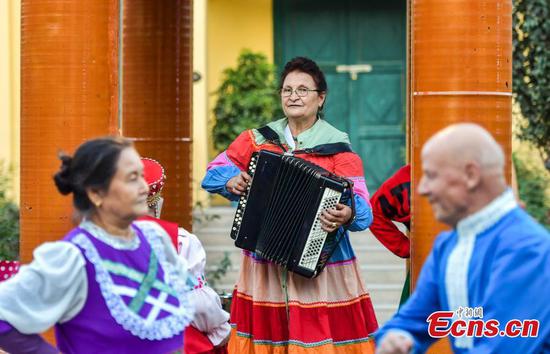





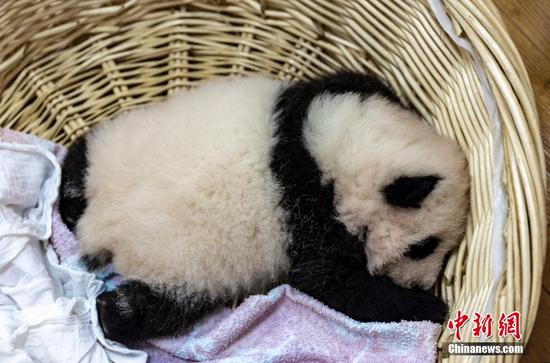
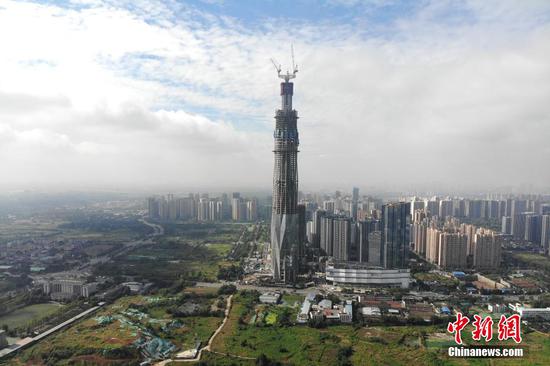
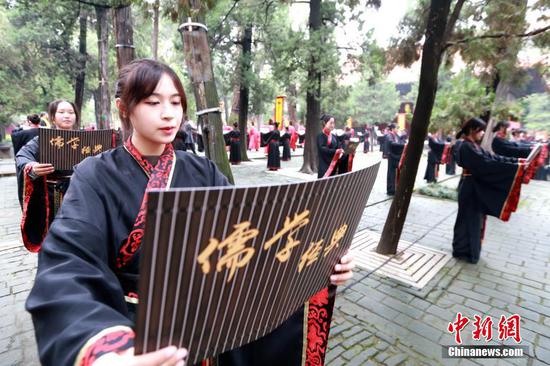

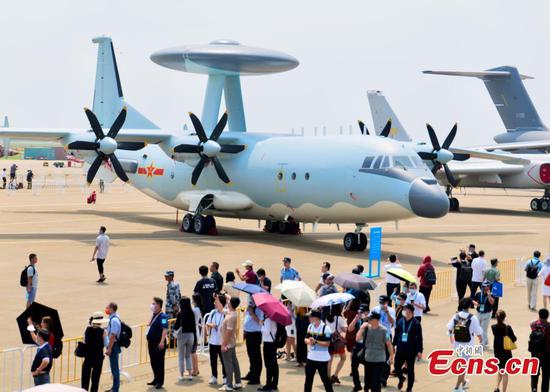



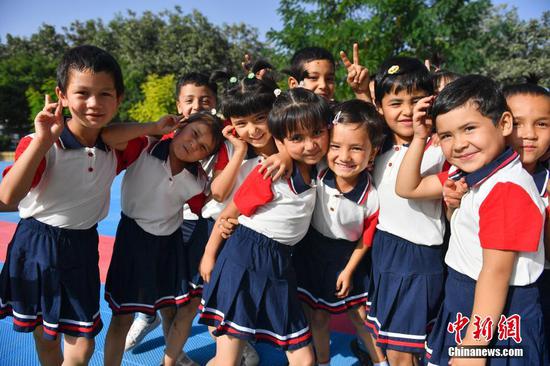

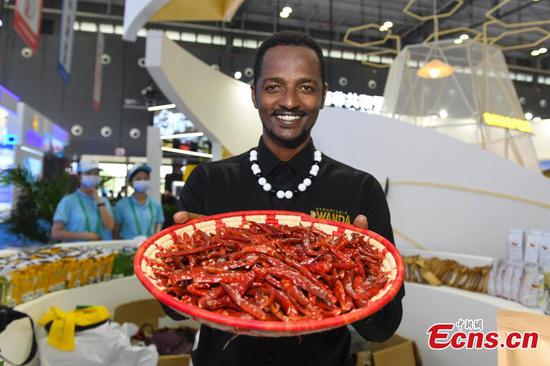
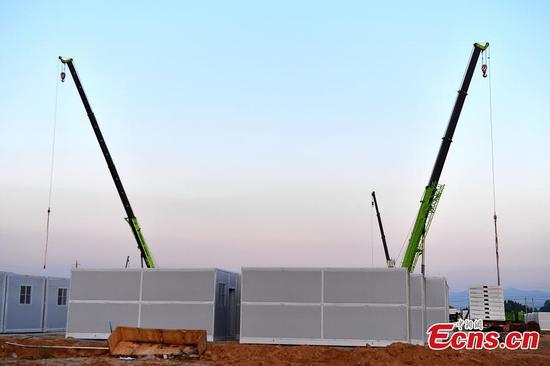
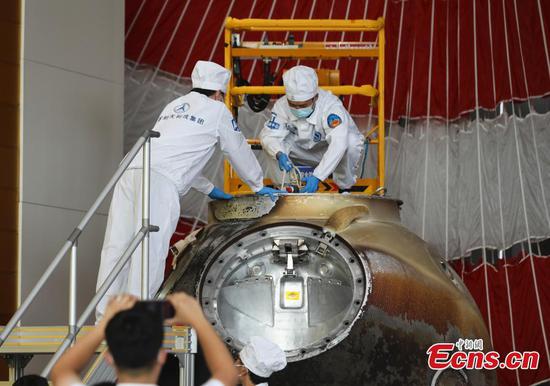



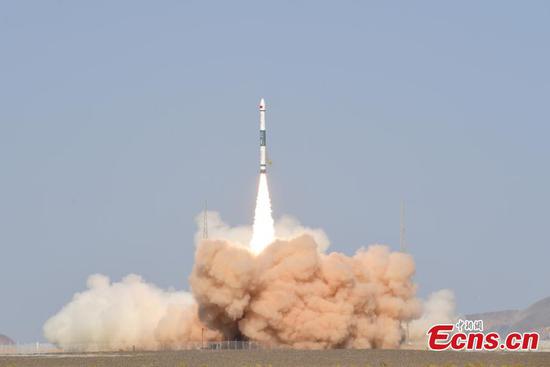


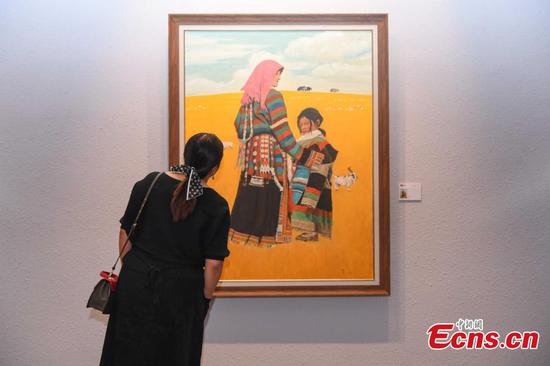

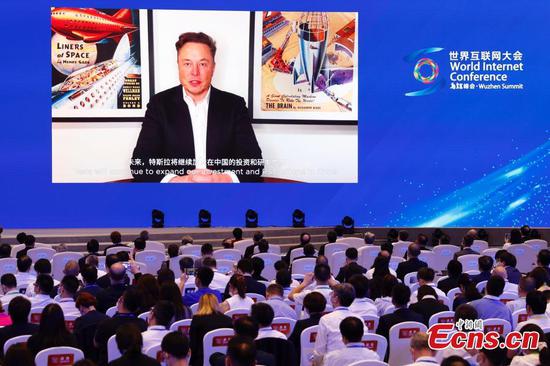





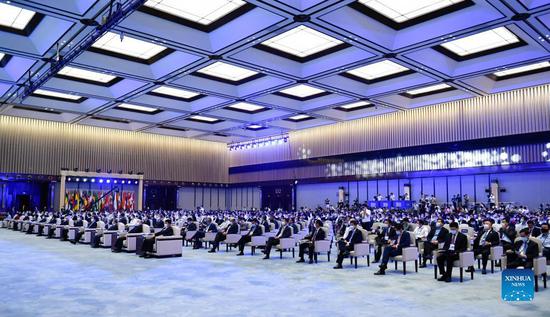

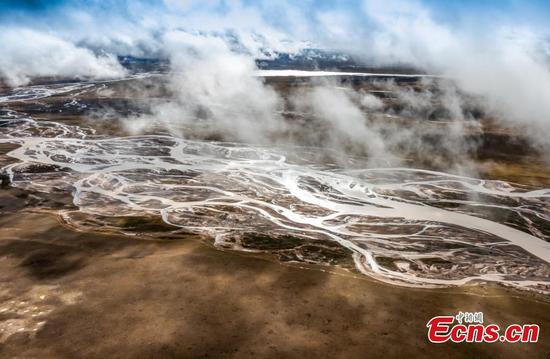

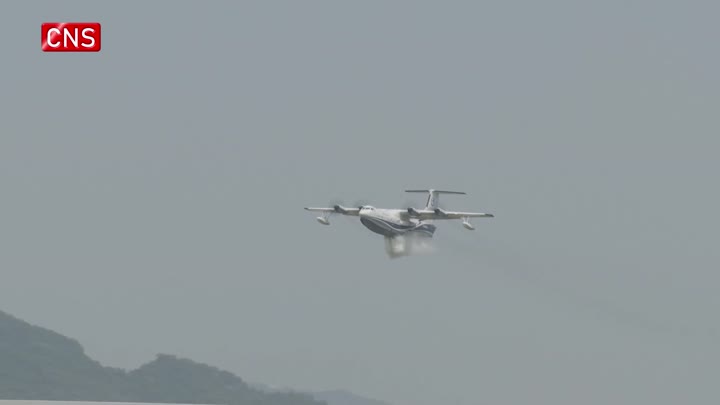

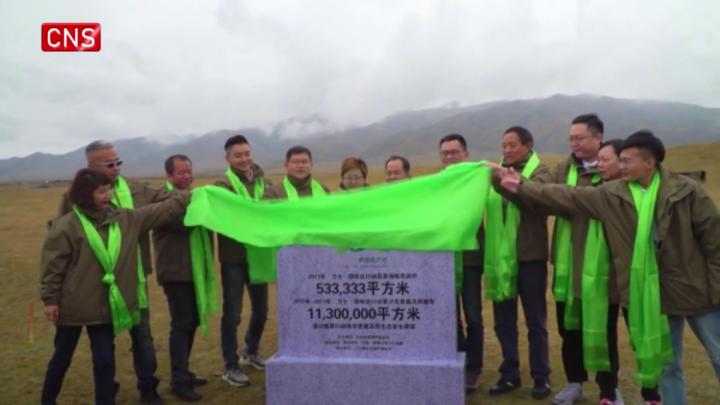

 京公网安备 11010202009201号
京公网安备 11010202009201号